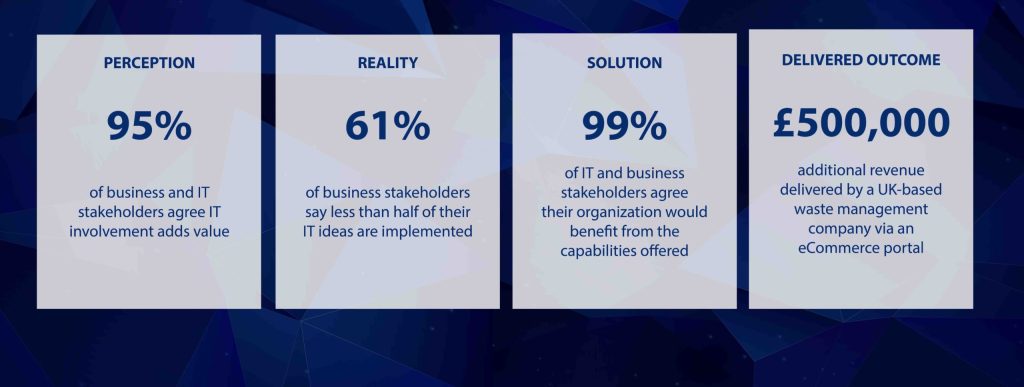Table of Contents
Low-Code Application Development – Fad or Future?
According to Gartner, by 2024, low-code app development will be responsible for more than 65% of application development activity.
Low-code or rapid application is a visual approach to software development. Low-code application development abstracts and automates every step of the application lifecycle to enable rapid delivery of a variety of software solutions. It breaks the traditional silos of business and IT to promote continuous collaboration.
Rapid applications, as the name suggests, are designed to expedite software delivery by quickly building apps for specific business use cases. Instead of spending time to code an app from the scratch, low-code application development allow developers to work with existing templates, prebuilt drag and drop features, forms, and objects together to get a particular department or team the simple working app they need in just a matter of days.
Why adoption of low-code application development is on the rise?
Increased business demand for software solutions and a shortage of skilled developers have propelled the adoption of low-code powerapps to the forefront. Let’s look at certain benefits that make it an obvious choice.
1. For Business
- Automate Processes – Enterprises can automate processes to free up time for more innovative work and explore data to uncover actionable insights.
- Empower the Business – Solve problems to create smart, secure digital solutions tailored to how people really work.
2. For IT
- Speed to Market – Develop apps quickly while retaining the ability to use traditional code-based development as needed.
- Lower Dev Cost – Reduce the threshold for application ROI and the need to hire and retain scarce development talent.
- Proper Resource Allocation – Distinguish which apps are the most used and in greatest need of oversight, reducing focus on IT app processes that are rarely used.
3. For the Employee User
- Centralized and Personalized – Visualized and embedded into a hub for teamwork for the individual to use daily as part of a modern, secure workplace.
9 principles to help maximize business impact
Rapid application development solves the disconnect between what business needs and what software delivers. Like any technology, companies need to use it correctly to get the most value out of it. Below are the 9 principles of low-code app development to help maximize its business impact.

1. Model-Driven Development – Transform ideas into apps that deliver value through, automation, abstraction and transparency.
2. Collaboration – Leverage a shared visual language to allow an interchange of knowledge and ideas between business and IT.
3. Agility – Manage the full application development lifecycle of an enterprise with agile workstreams to eliminate bottlenecks, support iterative delivery and achieve shortest time-to-value.
4. The Cloud – Cloud enables the fast deployment of applications that customers demand.
5. Openness – Anything can be integrated with an agnostic enterprise application development platform – this removes limitations on what can be built.
6. Multi-user Development – Multiple developers should be able to work on an application at the same time. The platform must support and synchronize their work.
7. Experimentation and Innovation – Development tools need to be affordable so innovators everywhere can experiment, explore, and create.
8. Governance & Control – Robust governance and protocols are essential.
9. Community – A platform without a community is no platform at all.
Who can build apps on low-code application development platforms?
There are different licenses to suit enterprises of every size and industry. Anyone with a valid license can start building apps on the low-code application platform (“per user” or “per application” models). With dedicated development environments for business users and professional developers, low-code application has been designed to augment and synchronize the work of multiple developers.
Professional Developers
A recent Gartner survey reports that 66% of low-code development platform users are professional developers from IT. At their core, professional developers want to build creative software solutions to solve complex problems. Rapid applications provide developers with a dedicated IDE and a sophisticated toolbox that is tailored to meet their development needs.
Citizen Developers
According to a recent Gartner report, 61% of organizations either have or plan to have active citizen development initiatives. Rather than waiting for IT, business users prefer to build their own apps. Business and IT ideally should partner together to build a formal citizen development initiative on a low-code platform. Low-code application development environment allows business leaders to build basic productivity apps, while at the same time giving IT full visibility into the company’s app landscape.
Best no-code platforms

Low-code essentials
To leverage the above mentioned benefits, organizations need a platform which is coordinated with the nine principles of low-code application development and provides the ability to:
- Deliver engaging experiences to end-users – A single platform to build applications for different touchpoints in a user journey — web, mobile, conversational, or immersive.
- Empower a range of developers to build – A dedicated toolbox for every type of developer. Openness and extensibility to create complex applications for professional developers. Drag-and-drop components and a simplified no-code IDE for business users.
- Operate on a cloud-native architecture – A platform that simplifies operations through automation and abstraction —just like low-code application development platform. Build solutions that are multi-cloud portable, scalable, and secure by default.
How can low-code application development help your enterprise move forward in an AI-led world?
- Client Competitiveness: Companies can rapidly deploy solutions aligned with strategic roadmap of the business, usually to fulfil a short-term need.
- Client Market Relevance: Low-code application development platforms empowers your enterprise to stay on top of the latest technologies, while empowering the entire workforce to add value quickly and effectively.
- Research & Development Innovation: Organizations can go from problem statement to mock-up to implementation with workshops and training sessions.
- Delivery Methodologies: An agile approach allows a team of 1-3 people to experiment a proof-of-concept in 4-6 weeks, enabling expansion and integration to existing business models.
Value of rapid app development platforms
Great software solutions are of immense value to the business. They can help organizations drive new revenue, enhance customer satisfaction, mitigate risks, cut costs, and more. Unfortunately, constantly delivering impactful solutions is not easy. Enterprises can consider the following arguments and solutions before adopting these platforms.

Ready to embrace low-code app builder? We can help you start small and go big.
















